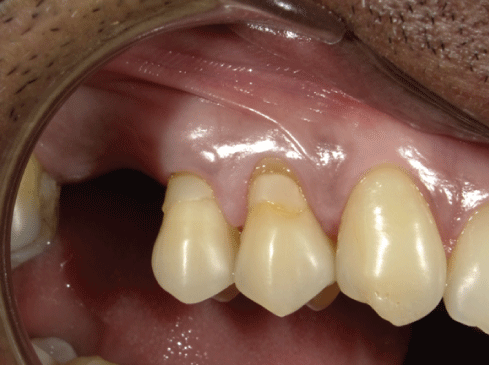
Figure 1: Pretreatment retracted close-up photograph of previously placed Class V restorations on teeth Nos. 4 and 5 that were failing and had become sensitive to cold.


Paiman Lalla*
Dental Surgeon at Tropical Dental, Victoria Medical Center, San Fernando, Trinidad & Tobago*Corresponding author: Paiman Lalla, Dental Surgeon at Tropical Dental, Victoria Medical Center, San Fernando, Trinidad & Tobago, E-mail: tropicaldental@yahoo.com
Gingival recession is common in the adult population, affecting almost all middle to older-aged individuals to some degree, is characterized by the apical migration of the gingival margin toward the cementoenamel junction (CEJ) [1]. The level or severity of recession is determined by the distance between the CEJ and the gingival margin. Among other factors, gingival recession can be caused by periodontal disease, plaque accumulation, inflammation, improper flossing, aggressive tooth brushing, malocclusion, and dominant roots [2].
On the island of Trinidad, one of the unique challenges involved in treating patients with gingival recession is the ethnic variation of the population, which results in a myriad of gingival color tones [3]. The population is 35.4% East Indian, 34.2% African, 15.3% mixed ethnicity (African/East Indian), 7.7% other, and 1.3% unspecified [4].
Until a few years ago, recession cases had to be treated with traditional tooth shade composite because the variation in gingival shade resulting from the population’s ethnic mix made it difficult to find acceptable gum shades for many patients. Unfortunately, this caused an esthetic dilemma because it failed to maintain gingival symmetry, and some patients were unsatisfied with the results due to the disproportionate appearance of their teeth.
The introduction of a universal composite with a unique gingival shading system presented a solution to this problem. The universal composite used in the following case report is Shofu’s ‘Beautifil II Gingiva Shades’, and is available in five gingival shades that can be blended and layered to produce custom shades to treat gingival recession in patients of any ethnicity.
Permission was obtained from patient for publication of the following case.
A 53-year-old male patient of Indian descent who had previously received Class V restorations on teeth Nos. 4 and 5 (Figure 1) presented to the practice complaining of mild cold sensitivity associated with tooth No. 4 and severe cold sensitivity associated with tooth No. 5. To improve the process of treatment planning and shade matching, all clinical photography for the case was performed with a digital dental camera (Eye Special, Shofu).

Figure 1: Pretreatment retracted close-up photograph of previously placed Class V restorations on teeth Nos. 4 and 5 that were failing and had become sensitive to cold.
A thorough examination revealed damage to the restorations in the buccogingival region of both teeth. After discussing possible treatment options, the patient chose to have the existing composite restorations replaced. The Miller Class I gingival recession exhibited by tooth No. 5 would offer the opportunity to use a blend of gingival shade universal composites to maintain the appearance of gingival symmetry [5]. In addition to the obvious esthetic benefits, these gingival shade composites were selected because they contain Shofu’s bioactive Giomer Technology, which has been clinically proven to facilitate long-term ion exchange for antibacterial and acid-neutralizing effects that can help to minimize problems caused by plaque and biofilm and reduce the occurrence of secondary decay [6,7].
After administering 1 carpule of Septodent’s Septocaine®, coarse and fine diamond burs (Maxima®, Henry Schein) were used to remove the old composite restorations and to slightly bevel the enamel margin of the preparations (Figure 2). The enamel surfaces of the preparations were then selectively etched with a 38% phosphoric acid solution (Etch-Rite™, Pulpdent) to avoid the occurrence of sensitivity if any of the exposed dentin was also etched (Figure 3). Next, a universal bonding agent (BeautiBond®, Shofu) was applied to all surfaces of the preparations in one generous coat, left undisturbed for 10 seconds, airdried for 3 to 5 seconds, and then light cured for 5 seconds (VALO™ curing light, Ultradent) (Figure 4). This universal bonding agent was chosen because of its unique dual adhesive monomers, which deliver equal bond strength to enamel and dentin with an extremely low film thickness of 5 µm that helps to eliminate marginal stain lines.
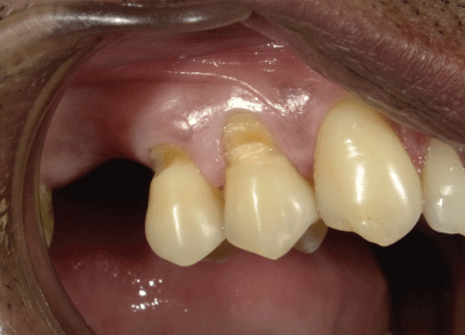
Figure 2: The old composite restorations were removed, and the enamel margins of the preparations were slightly beveled with coarse and fine diamond burs.
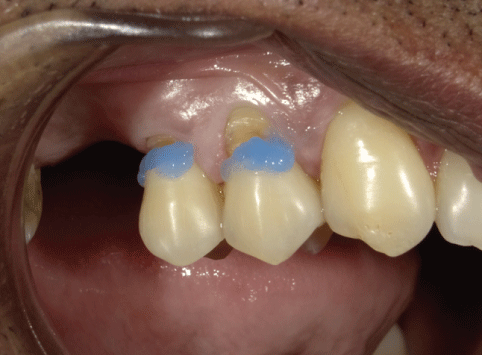
Figure 3: The preparation was selectively etched using a 38% phosphoric acid solution.
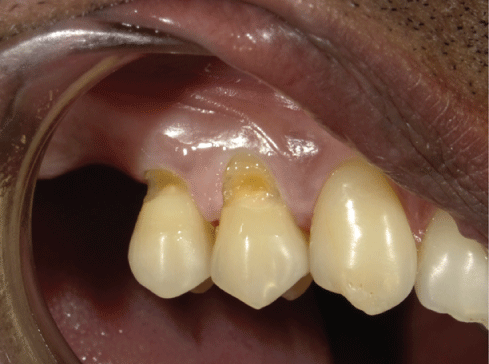
Figure 4: One generous coat of a bonding agent was applied to the entirety of both preparations, left undisturbed for 10 seconds, airdried for 3 to 5 seconds, and then light cured for 5 seconds.
After the bonding agent was placed and cured, the first step of the restorative process was to place a flowable nanohybrid composite (Beautifil Flow Plus® X F00 [A4], Shofu) into the bonded preparations in layers no thicker than 2 mm, each of which was light cured (Figure 5). Once the tooth structure was restored, the next step was to add the gingival shade universal composite (Beautifil® II Gingiva [GV, G-DP], Shofu) to tooth No. 5 to improve the gingival symmetry. For this case, the violet and dark pink shades were mixed in a 3:1 proportion (Figure 6). An ultra-fine diamond bur and a 16-fluted carbide bur were then used to complete the contouring and finishing. The final polishing was accomplished with a 32 fluted carbide bur and an 8-mm polishing disc system (Super-Snap®, Shofu). The shade of the gingival composite achieved in the final result closely matched the natural gingival shade of the patient (Figure 7). The total time taken for the above case was approximately 20 mins.
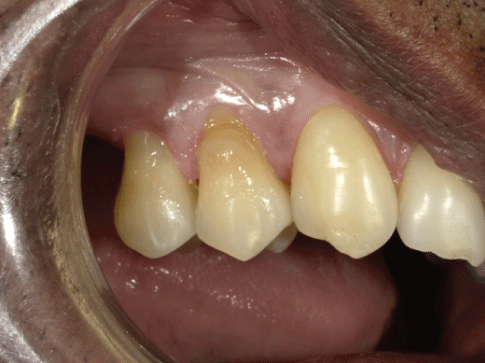
Figure 5: A flowable nanohybrid composite was dispensed into the bonded preparations in layers that were no thicker than 2 mm and individually light cured.
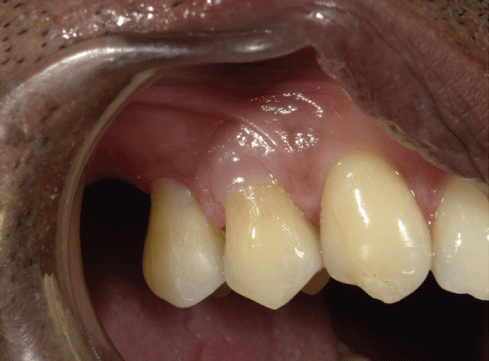
Figure 6: The violet and dark pink shades of a gingival-colored universal composite system were mixed in a 3:1 proportion and added to the restoration on tooth No. 5 to improve the gingival symmetry.
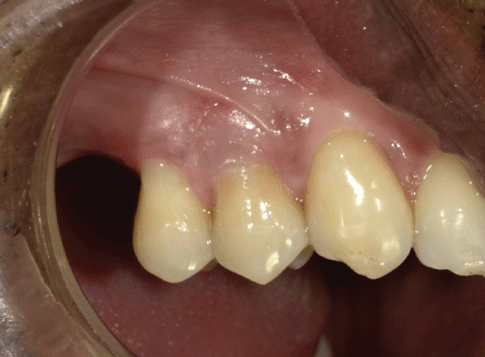
Figure 7: Post treatment retracted close-up photograph showing the final results. Note how the shade achieved by mixing the gingival composites closely matches the natural gingival shade of the patient.
Download Provisional PDF Here
Article Type: CASE REPORT
Citation: Lalla P (2022) Re-Treatment of Failing Class V Restorations with Gingival Recession. Int J Dent Oral Health 8(2): dx.doi. org/10.16966/2378-7090.389
Copyright: © 2022 Lalla P. This is an open-access article distributed under the terms of the Creative Commons Attribution License, which permits unrestricted use, distribution, and reproduction in any medium, provided the original author and source are credited.
Publication history:
All Sci Forschen Journals are Open Access